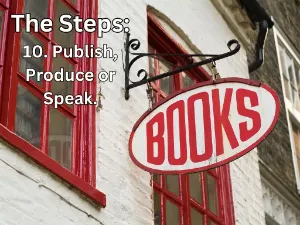Custom, professional email writing, rewriting and editing services: Writing an effective email is an art.
By- Janaé Rachel Ballot
Hello Reader,
I hope you’re having a good day.
Email is an effective communication tool in our world. Businesses are swamped with thousands of emails in their inboxes throughout the week. Friends use it as a means to converse. And let’s face it… our society is over-caffeinated, hustling and bustling with a need for instant results now.
Understanding how to write and rewrite emails allows us to keep projects moving and our clients happy. It can help us let a friend know when to schedule a Zoom or ask for advice on a personal topic. The bottom line is, 
The subject line
The subject line is one of the most important parts of the email and unfortunately dismissed too often. Think about it. You look at your inbox and read a subject line that only states, “Hi” from an unknown person. Wouldn’t that give you pause?
- “Who is this person?”
- “Why reach out to me?”
- “Should I open the email?”
People put little to no effort into their subject lines and it goes nowhere fast, besides the recipient questioning it. Your first trick: Take a moment to think about the purpose of your email.
Now that you have that, think about a way to entice the recipient to open it. As touched upon, a subject line that only contains “Hi” isn’t enticing, maybe even creepy. But a subject line that states, “John Smith here from X Company — thank you!” provides direct specifics and ensures your recipient will open it in a timely manner. When you’re polite and direct, it shows the recipient you respect their time.
When in doubt, remember the purpose behind sending your email and then briefly summarize it in four words. Be brief, to the point, and respectful.
Introduction & greeting
Picture this with me. You’re walking out of Starbucks. You’re rushed to get to work, your hands full with a latte and sandwich. A stranger holds the door open for you as you stride out. Naturally in this scenario you would acknowledge and say, “Thanks! Hope you have a good day!”
There’s no difference when writing the first line of the body of your email! Introduce yourself and acknowledge them by adding “I hope you’re having a good day.” It can be afternoon, evening, and night. Also, bear in mind the time zone. Is the person seven hours ahead? What time is it then? Feel free to change it up for a weekend email with “I hope you are having a good weekend.”
After you have your greeting and pleasantry down, you’re ready to dive into your main message.
What do you want?
Before writing just anything down in the body of the email, the first question you should ask yourself is: “What do I want?” And no, this doesn’t have to be some existential crisis — just kidding! It needs to be clear so the recipient can understand what you’re asking of them. Simple enough, right? Oftentimes people get caught up in using one too many words to explain their request whereas people, much like yourself, don’t have the time in a day to read paragraphs, especially if message can be summed up in a concise way. That way, people will be more inclined to read it, rather than skimming and thus risking missing critical information. If you can, boil it down to a few choice sentences. If you’re redundant or are beating around the bush, try rewriting and you’ll be surprised at how the old adage “less is more” is especially true with emails. Embrace the “five sentences discipline,” and you’ll find yourself writing emails quickly. You’ll also get more replies.
Let’s keep it short and sweet
“Never use a long word where a short one will do.” George Orwell said that. This advice is important today when it comes to emails. By using short words, you’ve done the hard work of making your message easy to understand. The same is true of short sentences and paragraphs. Avoid writing big blocks of text if you want your email to be clear. If the email holds a lot of critical information, then break it up so it’s easy on the eyes.
Tone
We’ve got your subject line, greeting and pleasantry, the purpose behind your email and the body of the email. All looks good, huh? Hold up a second and double check for one of the most important aspects, tone. Do an empathetic once-over. How does your email come off in the other person’s eyes? We want to make sure we’re polite and respectful. Unfortunately, we’re no longer kids who can use emojis as a way to say good job, so please save the thumbs-up for personal emails. Your tone and personality can shine through your emails. It doesn’t have to be mechanical. In fact, it shouldn’t be! Keep it warm and respectful and the recipient will be not only appreciative of that — they will reciprocate.
Sign off
Just as you want to start things off on the right foot with your greeting, you also want to part well. Here are five appropriate options to consider:
- Thanks
- Many thanks
- Best
- Regards
- Cheers
Was that a typo? Proofread!
You’ve got it all down. That empty, glowing email form stares right back at you. You’re ready to send off that important email but don’t rush! Let’s take another moment and do what most don’t.
Proofread and see if you can still rewrite.
That’s right. We all make common mistakes in our emails, especially if we are facing a deadline or our next task is occupying our mind. So take a moment and see:
Do you really need to repeat that word? If not, cut it. Are you coming off more like a textbook and not respectful? If so, try warming it up a bit with words like “kindly” and “appreciate it” in its proper context. Or perhaps your email is too casual with “What’s up?” as your greeting when you met this potential client a few days ago. People read deeply into emails. They glance over the words and since it’s been our vital and fast form of communication, we don’t hear people’s tone in emails.
Check your punctuation. Check your spelling. Seriously. If punctuation is not your strength, read the message conversationally, out loud or in your imagination. If a brief pause occurs in the midst of a sentence, a comma probably goes there. But don’t pepper a sentence with commas, you’ll just confuse the reader. You do not want the recipient to have to reread anything. There must be a period at the end of a sentence. Don’t misspell anything. Use some sort of spell check if necessary. Don’t use the wrong word (affect/effect, your/you’re, too/to, etc.) It’s not smart to assume the recipient won’t care about spelling and grammar.
The final review
Proofread to make sure the following is all set in order to before you click send!
- You have your purpose and request in the body of the email.
- You are clear and polite.
- No repetition. Words are concise.
- You have a warm greeting and sign off.
- It’s easy on the eyes, broken up, and not lengthy.
- There are no typos or overly-used commas.
Got it? Good! Now click send and feel good about writing and rewriting an email that is well written. At this point, you just wait for a reply.
Before you go! You have an email you need help writing or rewriting? Please take a look at Ghostwriters Central’s services. It takes time and experience to construct an effective, readable email, and they have that expertise and will be happy to help. Just click on Contact.
Best,
Janaé Rachel Ballot











